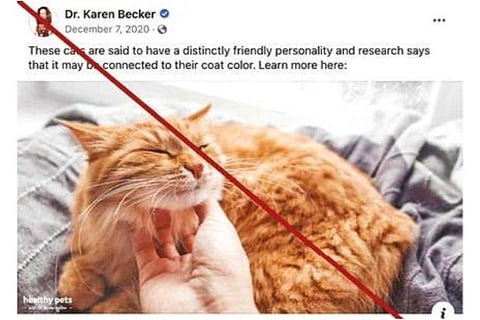

New York
The posts with the animals do not directly spread false information. But they can draw a huge audience that can be redirected to a publication or site spreading false information about election fraud, unproven coronavirus cures and other baseless conspiracy theories entirely unrelated to the videos. Sometimes, following a feed of cute animals on Facebook unknowingly signs users up as subscribers to misleading posts from the same publisher.
Melissa Ryan, chief executive of Card Strategies, a consulting firm that researches disinformation, said this kind of “engagement bait” helped misinformation actors generate clicks on their pages, which can make them more prominent in users’ feeds in the future. That prominence can drive a broader audience to content with inaccurate or misleading information, she said.
“The strategy works because the platforms continue to reward engagement over everything else,” Ryan said, “even when that engagement comes from” publications that also publish false or misleading content. Perhaps no organisation deploys the tactic as forcefully as Epoch Media, parent company of The Epoch Times. Epoch Media has published videos of cute animals in 12,062 posts on its 103 Facebook pages in the past year, according to an analysis by The New York Times. Those posts, which include links to other Epoch Media websites, racked up nearly four billion views. Trending World, one of Epoch’s Facebook pages, was the 15th most popular page on the platform in the United States between July and September.
One video, posted last month by The Epoch Times’s Taiwan page, shows a close-up of a golden retriever while a woman tries in vain to pry an apple from its mouth. It has over 20,000 likes, shares and comments on Facebook. Another post, on Trending World’s Facebook page, features a seal grinning widely with a family posing for a picture at a Sea World resort. The video has 12 million views. “Dr. Becker is a veterinarian, her articles are about pets,” said an email from Dr. Mercola’s public relations team. “We reject any New York Times accusations of misleading any visitors, but are not surprised by it.” The viral animal videos often come from places like Jukin Media and ViralHog. The companies identify extremely shareable videos and reach licensing deals with the people who made them. After securing the rights to the videos, Jukin Media and ViralHog license the clips to other media companies, giving a cut of the profits to the original creator.
The use of animal videos presents a conundrum for the tech platforms like Facebook, because the animal posts themselves do not contain misinformation. Rachel E. Moran, a researcher at the University of Washington who studies online misinformation, said it was unclear how often the animal videos led people to misinformation. But posting them continues to be a popular tactic because they run such a low risk of breaking a platform’s rules. “Pictures of cute animals and videos of wholesome moments are the bread and butter of social media, and definitely won’t run afoul of any algorithmic content moderation detection,” Moran said. “People still use it every day,” she said.
Alba is a reporter with NYT©2021
The New York Times
Visit news.dtnext.in to explore our interactive epaper!
Download the DT Next app for more exciting features!
Click here for iOS
Click here for Android